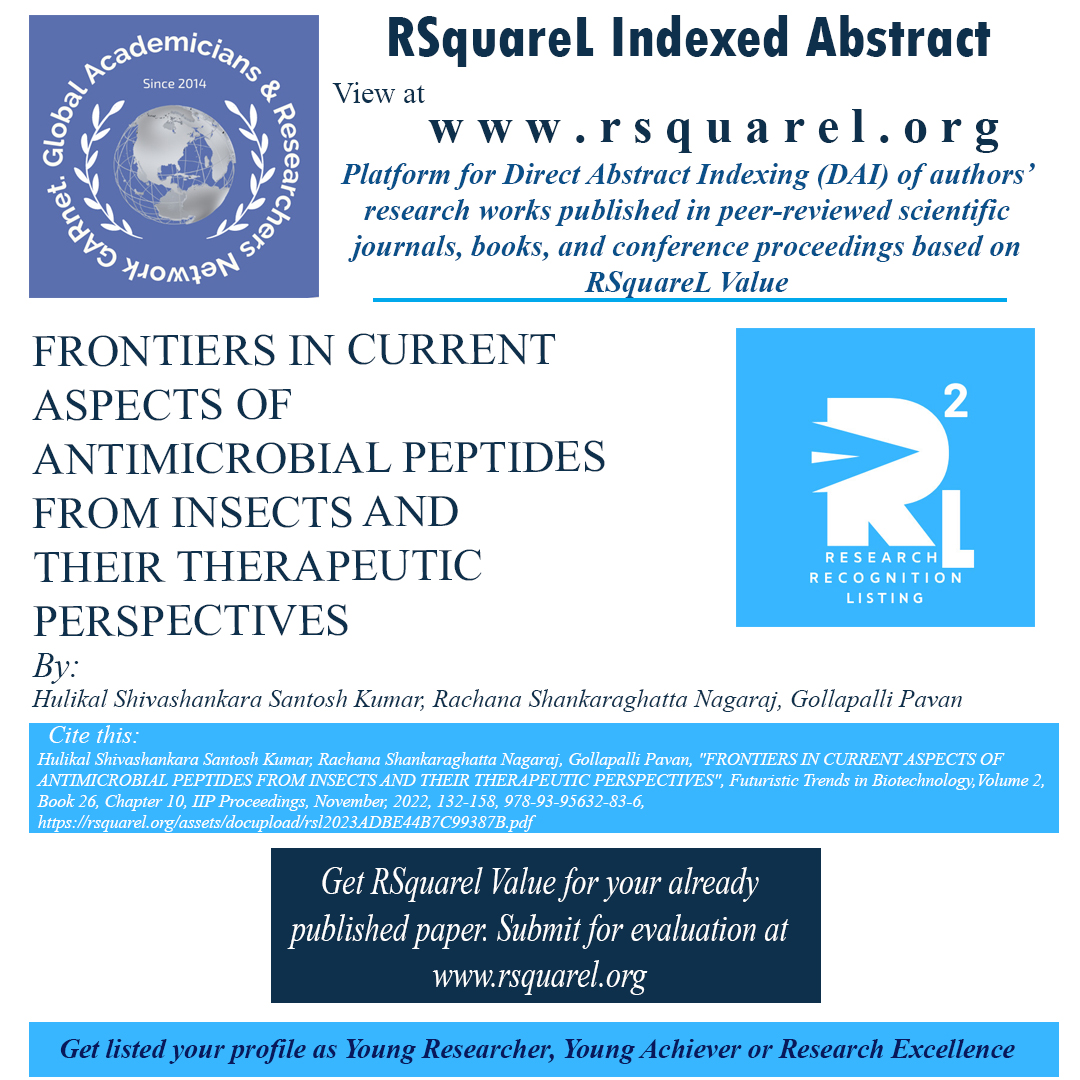editedbook
Publication: IIP Proceedings Year: 2022, Month: November Page No: 132-158, ISSN/ISBN: 978-93-95632-83-6, DOI/Link: https://rsquarel.org/assets/docupload/rsl2023ADBE44B7C99387B.pdf
FRONTIERS IN CURRENT ASPECTS OF ANTIMICROBIAL PEPTIDES FROM INSECTS AND THEIR THERAPEUTIC PERSPECTIVES
Area/Stream: Biotechnology, Authors: Hulikal Shivashankara Santosh Kumar, Rachana Shankaraghatta Nagaraj, Gollapalli Pavan Keywords: Antimicrobial peptides (AMPs), Mechanism of action, Classification, AMP applications Book Name /series: Futuristic Trends in Biotechnology,Volume 2, Book 26, Chapter 10Publication: IIP Proceedings Year: 2022, Month: November Page No: 132-158, ISSN/ISBN: 978-93-95632-83-6, DOI/Link: https://rsquarel.org/assets/docupload/rsl2023ADBE44B7C99387B.pdf
Abstract:
The abuse of antibiotics leads to antibiotic resistance, a major clinical challenge. The demand for better antibiotics is growing in the era of rogue microbes with a sophisticated mechanism to evade the immune system and equipped with improved drug resistance mechanisms. The search and development of new antimicrobial compounds and the evolution of drugresistant microbes is a cat and mouse game. Nevertheless, with the discovery of antimicrobial peptides (AMPs), new hope is emerging for effective combat against drugevasive microbes. AMPs with a broadspectrum antibacterial activity are expected to become the alternative antibiotics through the development of AMPs-based therapies. Antimicrobial peptides are short unique peptides of either basic or amphipathic character, having a length between 12 to 50 residues. They are predominantly found to be membrane proteins but also have few cytoplasmic targets. Nisin is the first AMP identified from bacteria found to kill other bacteria in a competitive, nutritional environment. Since then, the DRAMP database has reported 3791 antimicrobial peptides, including 431 from bacteria, 4 from archaea, 7 from protozoa, 6 from fungal, 824 from plants and 2519 from animals. They also possess other pharmacological activities besides antimicrobial activity, such as immune modulation, antiangiogenic, and wound healing activity. We review the historical developments in antimicrobial peptide drug discovery, their classification, mechanism of action, molecular biology and their application.
Cite this: Hulikal Shivashankara Santosh Kumar, Rachana Shankaraghatta Nagaraj, Gollapalli Pavan,"FRONTIERS IN CURRENT ASPECTS OF ANTIMICROBIAL PEPTIDES FROM INSECTS AND THEIR THERAPEUTIC PERSPECTIVES", Futuristic Trends in Biotechnology,Volume 2, Book 26, Chapter 10, November, 2022, 132-158, 978-93-95632-83-6, https://rsquarel.org/assets/docupload/rsl2023ADBE44B7C99387B.pdf
Views: 4179
Download File
News
